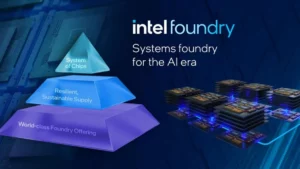Introduction
In a strategic move amidst the escalating chip war with Huawei and the backdrop of tightening US export trade regulations, Nvidia, a leading semiconductor company, has announced a significant reduction in the processor prices of its most advanced AI processors in China.
According to a Reuters report, Nvidia has cut processor prices in China by 10% in an apparent response to competition from Huawei’s domestic chips. This move comes after Nvidia introduced new AI chips specifically designed for the Chinese market, following US sanctions that restricted them from selling their most advanced tech there.
Analysts believe this price reduction reflects Nvidia’s effort to gain market share in China, a crucial market for AI development. With China’s AI industry projected to grow significantly in the coming years, Nvidia is likely aiming to establish itself as a major player. This price cut can be seen as a strategic move in the ongoing chip war between Nvidia and Huawei.
This decision underscores the intensifying competition within the Chinese semiconductor market and Nvidia Reduces Processor Prices in China by 10% Amid Chip War with Huawei, proactive response to maintain its market share and competitiveness against domestic rivals.
Follow us on Linkedin for everything around Semiconductors & AI
Background
The chip conflict between Nvidia and Huawei emerged against the backdrop of US sanctions. This not only targeted Chinese firms but also imposed restrictions on foreign companies exporting high-quality chips to China.

US Sanctions: The US government has restricted the sale of certain technologies to China, including some high-powered AI chips. This limited Nvidia’s ability to sell their most advanced products in the Chinese market. This signals a significant blow considering China’s growing importance in AI development.
China’s Response: Faced with these restrictions, China has been actively developing its own domestic chip industry. Huawei, a major Chinese tech company, has emerged as a key player in this effort. Their Ascend 910B chip is seen as a direct competitor to Nvidia’s offerings.
Nvidia’s Challenge: With limited ability to sell top-of-the-line chips and facing competition from domestic players like Huawei, Nvidia is under pressure to maintain its market share in China.
“Nvidia is walking a fine line and working on a balancing act between maintaining the Chinese market and navigating U.S. tensions. Nvidia is definitely preparing for the worst in the long term.”
Pricing Strategy Amidst Competition
Facing stiff competition from Huawei, Nvidia has opted to reduce the prices of its advanced AI processors in China. Despite launching three AI chips in China last year to comply with US trade export rules, Nvidia has encountered challenges in gaining market traction against its domestic rival. The price reduction reflects Nvidia’s determination to remain competitive in the Chinese market amid intensifying competition and regulatory uncertainties.
Read More: GPT-4o: 12 Mind-Blowing Use Cases That Change How We Interact with AI – techovedas
Challenges in China Market
Nvidia’s semiconductor business in China faces several hurdles, including weaker demand for its AI chips and increasing competition from Huawei.
While Nvidia’s AI chips were initially priced similarly to Huawei’s Ascend 910B processor, the company has now slashed prices by 10% in a bid to attract consumers.
However, supply chain sources indicate that Nvidia’s chipsets are experiencing a surplus in the market, signaling subdued demand from consumers.
Read More: Scarlett Johansson vs. AI: Did OpenAI Steal Her Voice? – techovedas
Future Outlook and Market Dynamics
Despite the challenges, Nvidia remains optimistic about its prospects in the Chinese market. Analysts predict that China’s global share in the AI industry could reach 30% by 2035, presenting significant growth opportunities for semiconductor firms.
However, Nvidia must navigate US-China tensions and fierce competition from domestic players like Huawei to maintain its market position and profitability in the long term.









